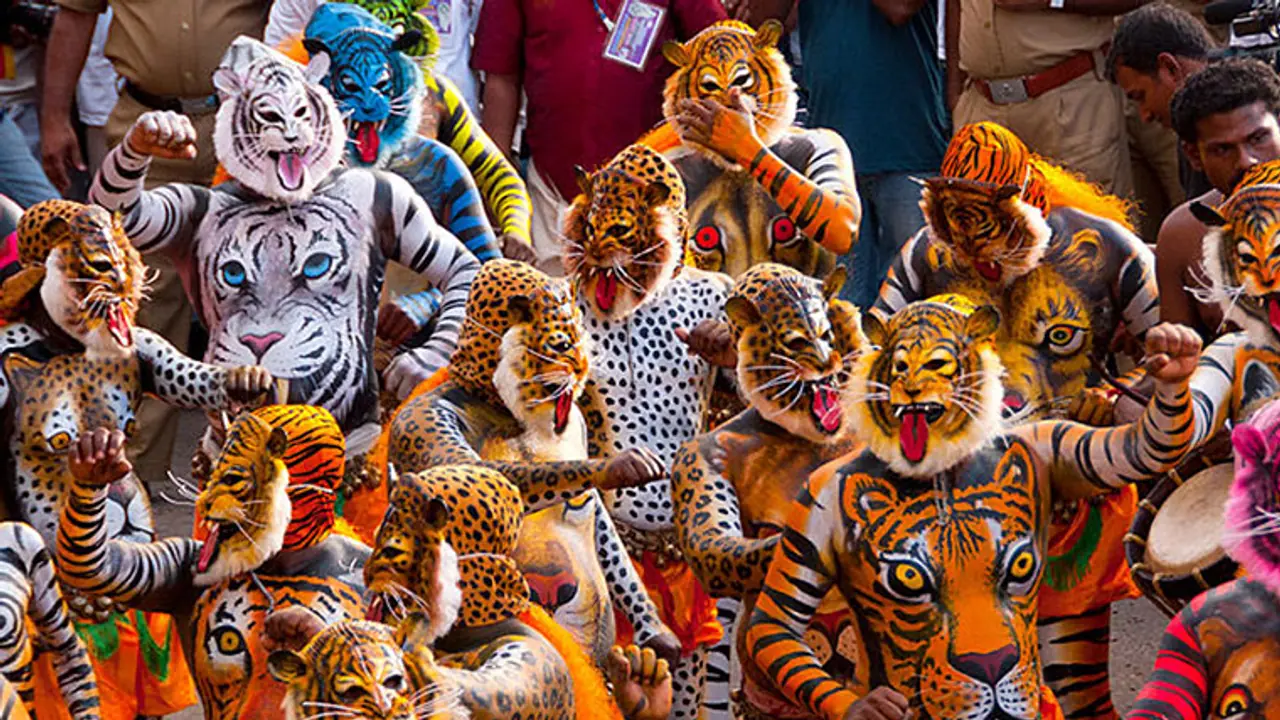The royal, majestic tiger is not only the national animal of India, but has inspired many states to have 'Tiger dances' as a major aspect of their folk dances. Here is a glimpse of the famous ‘Hulivesha’
The royal, majestic tiger is not only the national animal of India, but has inspired many states to have 'Tiger dances' as a major aspect of their folk dances. Here is a glimpse of the famous 'Hulivesha', which is also called 'Pilivesha' in Coastal Karnataka

Impressed? Baffled? Well here are five things you did not know about Hulivesha
The dangerous paint:
These human tigers usually use paint thinner/kerosene and apply industrial paints to look majestic. Doctors have warned that this is very hazardous for health and have advises Hulivesha troupes to use vegetable dye.
Still, the practice of using harmful paints continues. As the festival goes on for two days and only the thick enamel paint remains on body for so long, opine members of performing troupes
The special someones:
Amusingly, though the dance in itself is a celebration of the tiger, every Hulivesha troupe has a one 'shooter' group.
These are basically young children, who dance as 'cubs' and one hunter, with a fake gun to 'shoot' them every now and then.
These children, incidentally, are some times the best part of the dance, thanks to their awesome performances.
The preparations:
As can be imagined, painting a troupe - ranging from 10 to 30 members - from head to toe in the intricate natural look of a tiger is quite time consuming.
The painting usually begins after a certain pooja on the eve of the Hindu festival of Krishna Janmashtami. It takes several hours to paint just one body, and most times, the painting goes on all night.
A tiger by any other name:
Though this may seem like a folk dance with limited appeal, it is actually spread across most of India in one form or the other.
This animalistic performance has deep roots among the tribals spread across the country's Southern and Eastern side. It is stronger in the East though, with even places like Indonesia havin a similar traditon.
Hulivesha is called Puli Kali in Kerala, Puli Attam in Tamil Nadu, Puli Vesham in Andhra Pradesh and Bagh Nritya in Assam.
Rolling to the beat:
As the tiger dance is unique, so is the beat to which the painted troupes dance.
These sounds are traditonally created by the trumpet, known as Nagaswara in the Tulu language, and two kinds of drums – a form of the chande drum and a single bass drum called Thase in Tulu.
So remember folks, if you want to catch a glimpse of this special and fun dance, then at the right time of the year, just head to the small towns of Southern India and follow the drumbeats.
Here are some of more pictures of dances across the nation:

